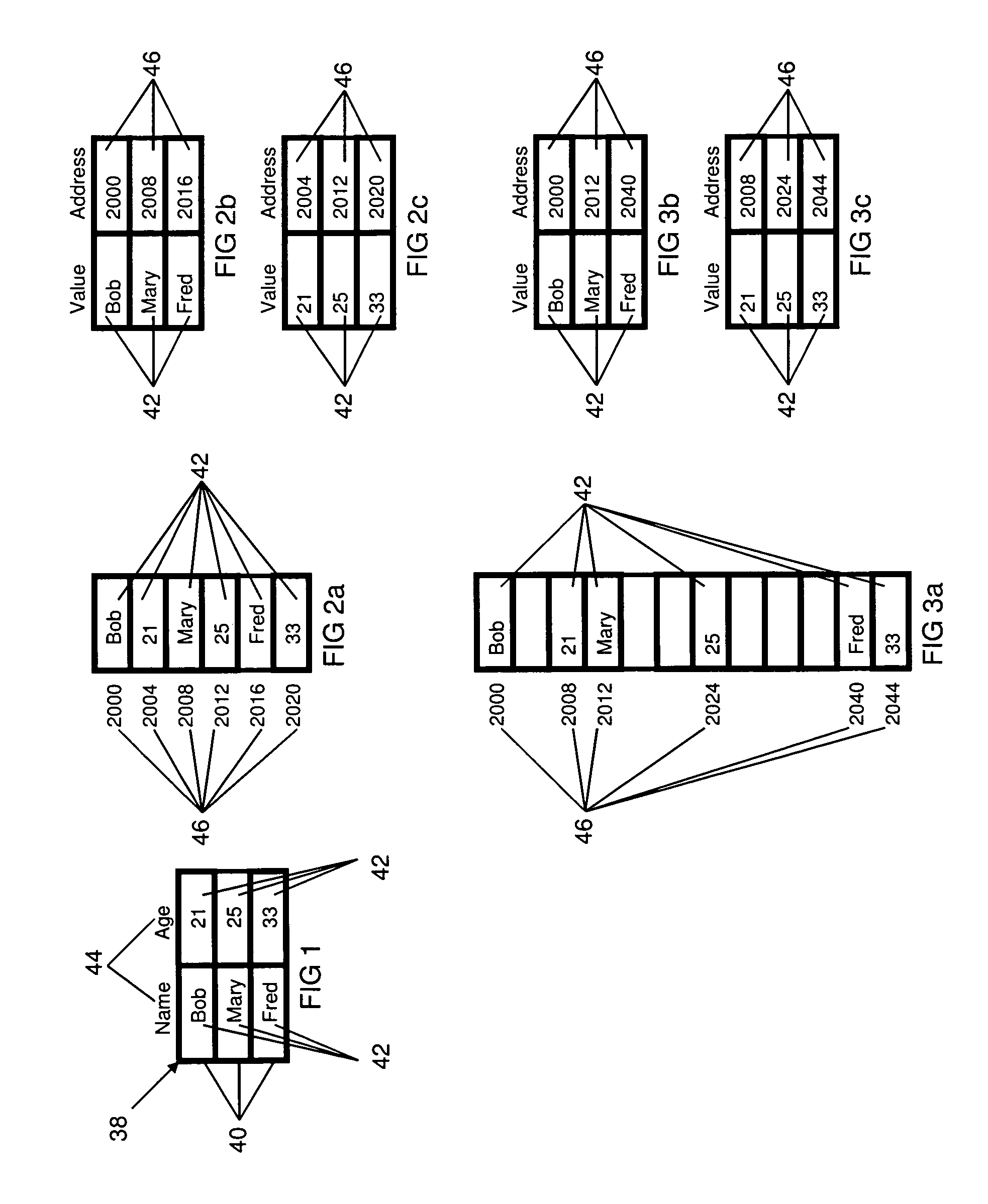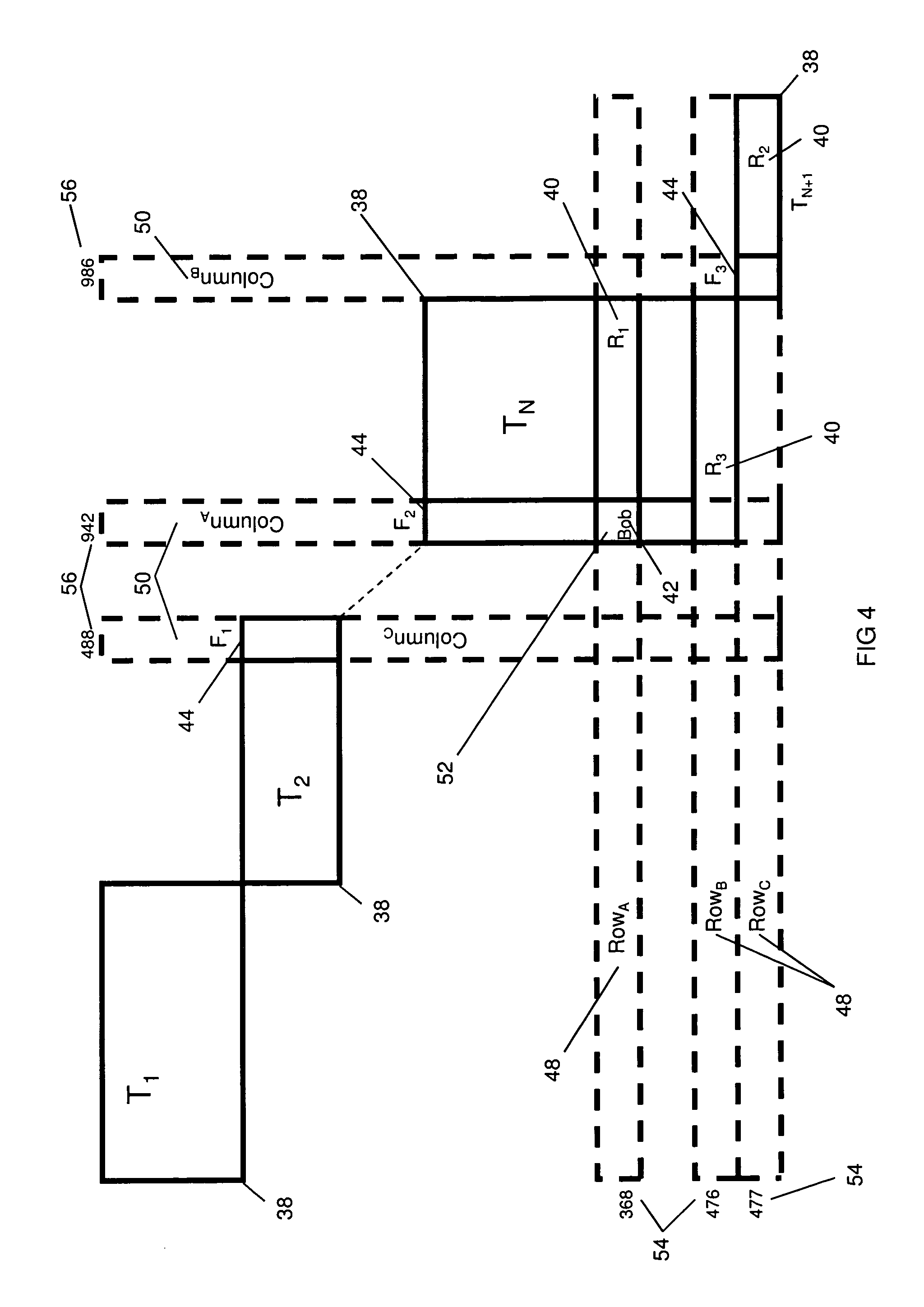Two-dimensional data storage system
a data storage system and two-dimensional technology, applied in the field of two-dimensional data storage system, can solve the problems of processing delay, typically computationally expensive operation, etc., and achieve the effect of facilitating field-level locking
- Summary
- Abstract
- Description
- Claims
- Application Information
AI Technical Summary
Benefits of technology
Problems solved by technology
Method used
Image
Examples
Embodiment Construction
A Two-Dimensional Data Storage Model
[0067]FIG. 4 illustrates the main elements of our two-dimensional logical data storage model:[0068]Cell 52: contains a single data value 42.[0069]Row 48: contains cells 52 whose data values 42 comprise a series of records 40[0070]Column 50: contains cells 52 whose data values 42 comprise a series of fields 44
[0071]The rows 48, columns 50 and cells 52 in the two-dimensional logical storage space may be thought of as “containers” for records 40, fields 44 and data values 42, respectively.
[0072]Two-Dimensional Addresses
[0073]Locations in the two-dimensional space are expressed in terms of coordinates along two axes, a column axis and a row axis (analogous to x and y Cartesian axes). As shown in FIG. 4:[0074]the position of a row 48 in the two-dimensional space is expressed in terms of its row coordinate 54. For example, in FIG. 4, the row coordinate 54 for RowA is 368.[0075]the position of a column 50 is expressed in terms of its column coordinate 56...
PUM
 Login to View More
Login to View More Abstract
Description
Claims
Application Information
 Login to View More
Login to View More - R&D
- Intellectual Property
- Life Sciences
- Materials
- Tech Scout
- Unparalleled Data Quality
- Higher Quality Content
- 60% Fewer Hallucinations
Browse by: Latest US Patents, China's latest patents, Technical Efficacy Thesaurus, Application Domain, Technology Topic, Popular Technical Reports.
© 2025 PatSnap. All rights reserved.Legal|Privacy policy|Modern Slavery Act Transparency Statement|Sitemap|About US| Contact US: help@patsnap.com



